SMA Extension Cable: Length, Signal Loss & Best Uses
Sep 18,2025
How do you choose the right SMA extension cable for your device?
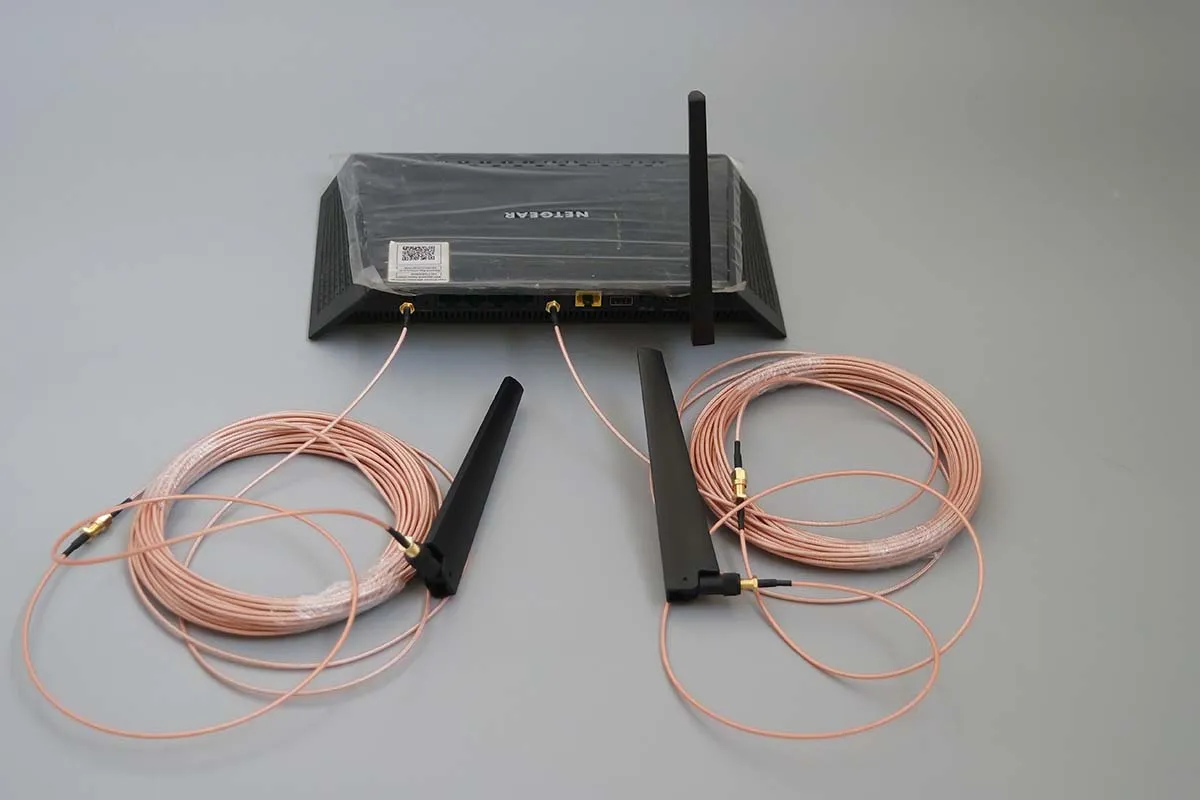
The image shows why it’s important to recognize SMA and RP-SMA connector differences before selecting an extension cable. Gender type (male/female) matters to avoid mismatched connections.
Choosing the right SMA extension cable starts with a simple but often overlooked question: what kind of port are you connecting to? Many people rush to pick a length, only to find the connectors don’t even mate. Before you click “buy,” take a moment to identify whether your device uses SMA or RP-SMA, and whether you’ll need a male-to-female or male-to-male extension.
Here’s the breakdown in plain language:
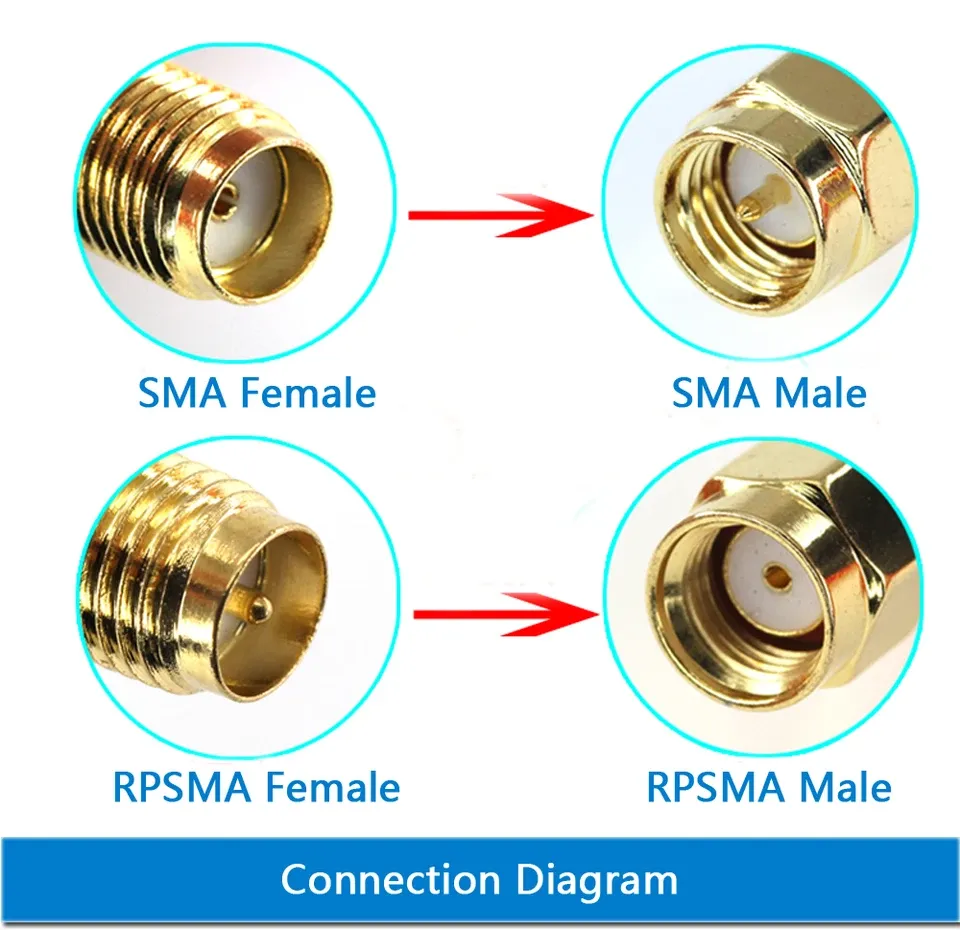
The photo explains common SMA extension cable configurations: male-to-female for general use, male-to-male for specific setups, and RP-SMA for WiFi routers.
- A SMA male to female extension cable is the everyday option. It extends your line without altering the connector type—perfect for routers, SDRs, or lab analyzers.
- Male-to-male versions aren’t as common, but they solve the problem when two devices both carry female SMA jacks.
- WiFi gear adds another twist. Most routers ship with RP-SMA female ports, which means the extension cable must have an RP-SMA male end.
One quick trick from the field: always look at the center contact. SMA male has a pin; RP-SMA male has a hollow center. Mix them up and you’ll be left with two ends that never connect, a mistake more common than you’d think.
If you’re still unsure, trace back to your device. Routers, SDR modules, or enclosures often have subtle differences in connector type that aren’t clear in product photos. I’ve seen engineers order the wrong part more than once because of misleading pictures. For broader context on how these cables pair with different devices, TEJTE’s RF adapter cable guide is a solid reference.
Does cable length affect signal loss in SMA extension cables?
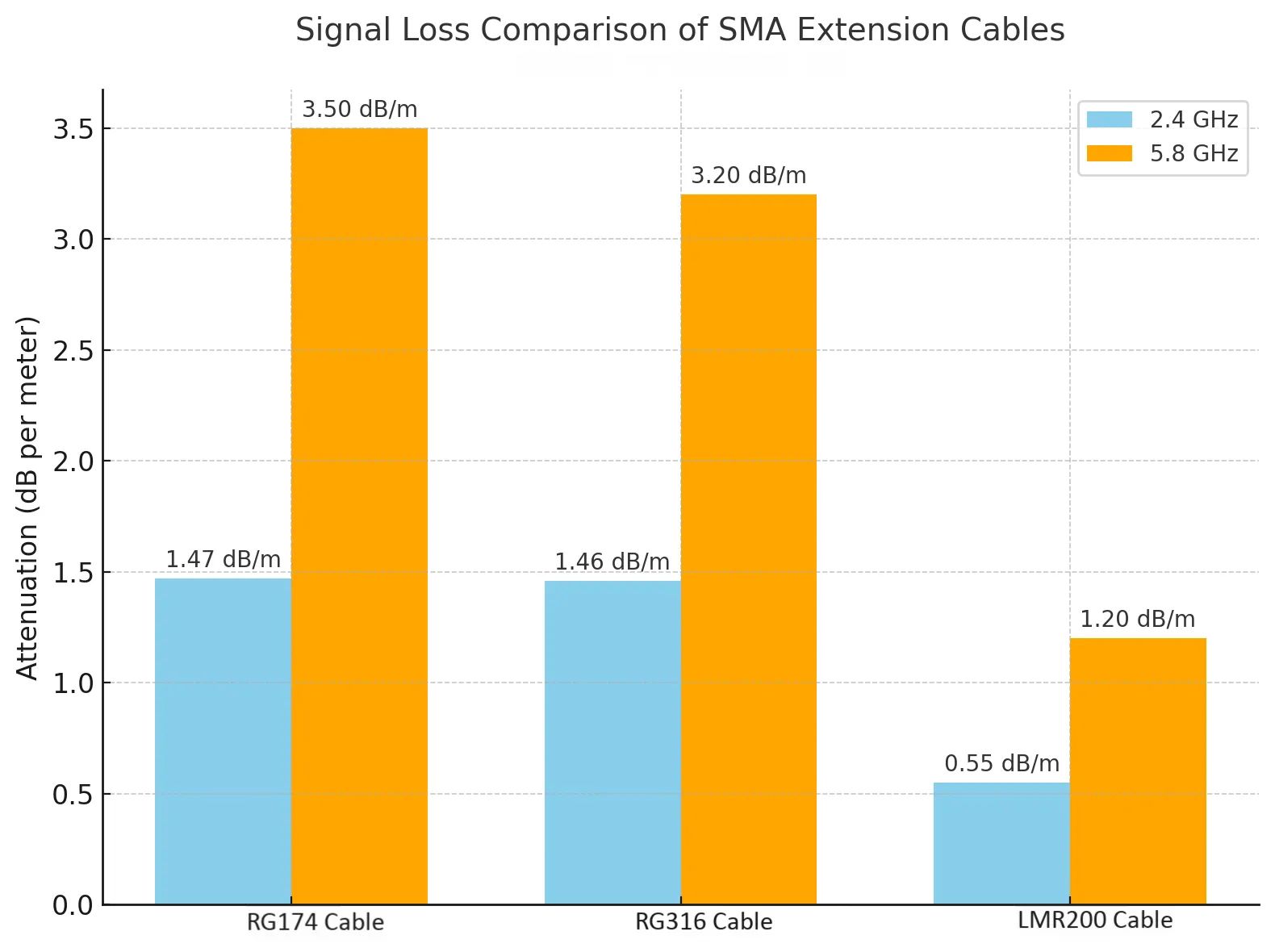
The image illustrates how cable length affects attenuation. It compares RG174, RG316, and LMR200, showing that thinner coaxial cables lose more signal at 2.4 GHz and 5.8 GHz.
The short answer: yes. Every 50 ohm SMA extension cable introduces attenuation, and the longer it gets, the more signal you lose. What catches many people off guard is how quickly that loss adds up at higher frequencies like 2.4 GHz and 5.8 GHz.
Take a closer look at real numbers:
- RG174 comes in light and flexible, but it’s also lossy. At 2.4 GHz, attenuation is about 147.4 dB per 100 m (~1.47 dB per meter). Stretch it to 10 m, and you’ve already dropped close to 15 dB—enough to cripple WiFi or GPS performance.
- RG316 does a bit better. It shows around 1.46 dB/m at 2.4 GHz and stays stable up to 6 GHz. Its PTFE insulation also keeps it working at higher temperatures, making it a safer pick for demanding builds.
- LMR200 is where you see the “low loss” name pay off. Thanks to foil plus braid shielding, it typically measures 0.5–0.6 dB/m at 2.4 GHz, almost half the loss of RG316, which makes it the smarter choice for outdoor antenna runs.
A useful rule of thumb in RF: once your total line loss hits 3 dB, the signal power has been cut in half. That’s why engineers rarely push thin coax like RG174 beyond a couple of meters. I’ve seen setups where someone tried to stretch RG174 across a room, only to wonder why their WiFi range collapsed. Switching to LMR200 solved it immediately.
For more comparisons across cable families, TEJTE’s RF coaxial cable guide lays out attenuation curves and use cases side by side.
Which SMA extension cable works best for WiFi antennas?
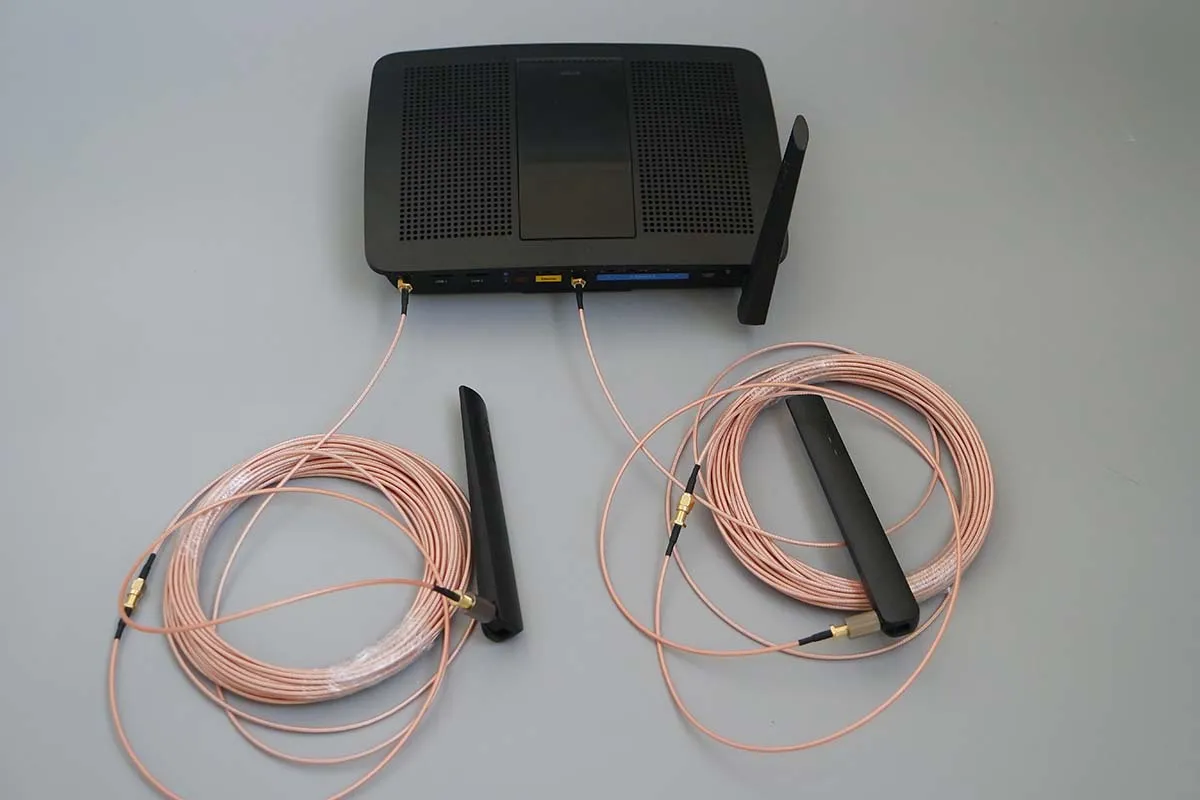
The photo outlines cable options for WiFi routers and antennas: RG174 for short runs, RG316 for mid-length, and LMR200 for longer outdoor installations.
When it comes to WiFi antenna extension cables, the best choice depends less on brand names and more on distance and environment. Most routers use RP-SMA female connectors, so the extension you’ll need almost always requires an RP-SMA male plug on one end. Miss that, and the cable simply won’t fit.
Here’s how the common coax types play out in WiFi setups:
- RG174: workable for very short runs, about a meter or less. Beyond that, its higher loss quickly eats into performance.
- RG316: the sweet spot for mid-length runs (2–3 m). It’s flexible enough to snake around desks or racks, and its PTFE insulation handles heat far better than PVC.
- LMR200: the choice for longer spans (5–10 m). With attenuation around 0.5–0.6 dB per meter at 2.4 GHz, it preserves signal where RG174 or RG316 would choke.
The setting matters just as much as the cable. Indoors, a simple SMA extension often does the job. Outdoors, it’s smarter to combine the run with a waterproof SMA bulkhead connector so rain and UV exposure don’t ruin your link.
One small field trick: avoid coiling excess cable behind your router. It’s tempting to leave a 10 ft lead bundled up, but those loops can act like unintended inductors and cause reflections. Cutting to the right length or routing cleanly makes a surprising difference.
If you want to see how WiFi antennas tie into other frequency bands like GSM or even 5G, TEJTE’s WiFi antenna guide offers practical scenarios that build on the same SMA extension principles.
Can SMA extension cables be used for FPV drones and ground stations?
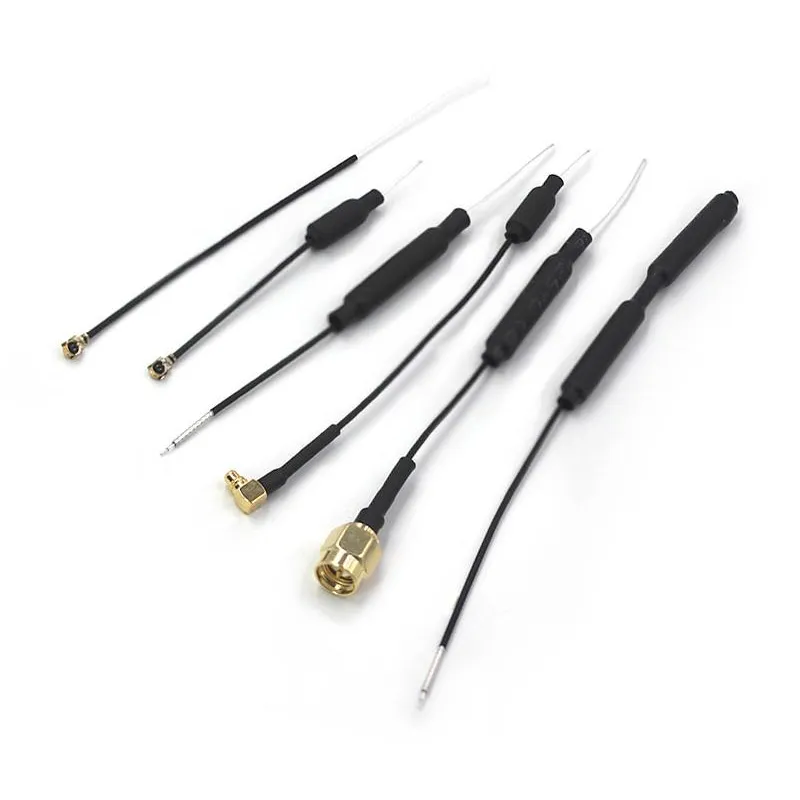
The image shows FPV drones using SMA extension cables to reposition antennas, improving line-of-sight and video stability during flights.

The image highlights SMA extension cables for FPV ground stations, where low-loss types like LMR200 extend video range and ensure stable antenna performance.
In FPV flying, every gram counts—and so does every decibel of signal. Pilots often add a FPV SMA extension cable to reposition antennas for a cleaner line-of-sight. The coax you pick here makes a real difference, not just on paper but in how steady your video feed feels in the air.
For small drones, RG316 is a reliable pick. At 5.8 GHz, its attenuation is about 2.34 dB per meter, which is manageable when you’re only running 20–30 cm. The PTFE dielectric also handles heat well, which matters once the electronics start warming up mid-flight. I’ve seen builds survive summer heat far better with RG316 than with cheaper coax.
RG174 is lighter, but the trade-off is higher loss—around 2.5 dB/m at 5.8 GHz. On very short jumpers, it may be fine, but for longer pigtails it quickly degrades video stability. That’s why many serious FPV pilots upgrade to RG316, or even semi-rigid options like RG141, when they want consistent performance.
On ground stations, weight isn’t an issue. What you want is reach. That’s where LMR200 pigtails shine. Lower attenuation extends usable video range and helps ground setups handle bigger antennas without drowning in cable loss.
For a broader perspective on coax selection and how it impacts FPV and wireless links, TEJTE’s ultimate RF cable guide maps attenuation and power handling across common cable families.
What’s the difference between RG174 and RG316 extension cables?
At first glance, RG174 extension cables and RG316 extension cables look similar. Both are thin, flexible coax with a 50-ohm impedance, and both show losses of around 1.4–1.5 dB per meter at 2.4 GHz. But once you dig into their construction and limits, the differences matter.
- RG174 uses solid PE insulation and a PVC jacket, with an outer diameter of about 2.85 mm. It’s rated for temperatures from –20 to +70 °C. At 2.4 GHz, expect roughly 1.47 dB/m attenuation, rising to 2.5 dB/m at 5.8 GHz. It’s lightweight and cheap, which is why it often appears in budget antenna kits or indoor test setups.
- RG316 steps it up with a PTFE dielectric and FEP jacket. Its diameter is slightly smaller, around 2.50 mm, but it withstands temperatures up to +165 °C and maintains stable performance under stress. Loss is 1.46 dB/m at 2.4 GHz, nearly the same as RG174, yet its high-temperature resistance and durability make it better suited for demanding or outdoor applications.
So when do you use each? RG174 works indoors, in routers or quick test links where cost and flexibility win over durability. RG316, on the other hand, is the safer bet for antennas on rooftops, equipment in hot environments, or aerospace/industrial builds where failure isn’t an option.
Here’s a small example: I’ve seen RG174 cables crack after a summer in a hot attic, while RG316 survived without noticeable change. For engineers who want a deeper dive, the RG316 coaxial cable guide breaks down specs, loss charts, and real-world uses side by side.
When should you pick waterproof or bulkhead SMA extension cables?
Not every installation sits in a climate-controlled room. Outdoor WiFi, rooftop CCTV, or vehicle GPS systems put cables in direct contact with rain, sun, and dust. In those cases, a waterproof SMA extension cable or a bulkhead-mounted version isn’t just nice to have—it’s essential.
These cables are built with sealing in mind. O-rings sit under the connector flange to block water, while gold-plated brass contacts resist corrosion. Jackets are usually rated for UV and weather exposure, so the cable won’t crack after a season of sunlight. If you’ve ever pulled down a CCTV antenna only to find a green, corroded connector, you know why this matters.
Bulkhead SMA connectors bring another benefit: they make enclosures easier to manage. By passing the connector through the wall of a housing and locking it with a nut, you get a clean, stable interface that’s simple to waterproof. Pair that with a low loss antenna extension cable with SMA connectors, and the setup holds both mechanically and electrically.
For longer outdoor runs, stepping up from RG174 to LMR200 pays off. At 2.4 GHz, LMR200 loses just ~0.55 dB per meter, which keeps WiFi or GPS links strong over several meters. Installers working with IP cameras or small base stations rely on it for exactly this reason.
If you’re considering enclosure sealing or IP67-rated hardware, TEJTE’s bulkhead SMA connector guide goes deeper into mounting styles and weatherproof options.
How to calculate attenuation and power rating for SMA extension cables
RF performance isn’t guesswork—it’s something you can calculate. Every SMA extension cable has a specific attenuation value, usually given in dB per meter. Once you know that number, you can estimate how long the cable can be before the loss becomes unacceptable. A common rule of thumb is the 3 dB limit: once your cable eats 3 dB, half of your signal power is gone.
Let’s apply this to real cables:
| Cable Type | Frequency | Attenuation (dB/m) | Max Length (~3 dB) | Typical Use |
|---|---|---|---|---|
| RG174 | 2.4 GHz | 1.47 | ~2 m | Short Wi-Fi jumpers, test leads |
| RG174 | 5.8 GHz | 2.50 | ~1.2 m | FPV drones (very short only) |
| RG316 | 2.4 GHz | 1.46 | ~2 m | Flexible Wi-Fi / LTE patch leads |
| RG316 | 5.8 GHz | 2.34 | ~1.3 m | FPV antenna extension cable |
| LMR200 | 2.4 GHz | 0.55 | ~5.5 m | Outdoor Wi-Fi, GPS antennas |
| LMR200 | 5.8 GHz | 0.90 | ~3.3 m | CCTV, small base stations |
Notice how fast loss increases as frequency rises. A 100 ft SMA extension cable made with RG174 or RG316 would be unusable—signal would vanish long before it reached the antenna. Even with low loss SMA extension cables like LMR200 or LMR400, such lengths are only practical when paired with amplifiers or powered repeaters.
A small installer’s tip: if you’re planning a run near the edge of these limits, always leave a margin. Environmental factors like heat or humidity can raise attenuation slightly, and you don’t want your design to fail in summer when it worked fine in spring.
For a broader look at how attenuation curves shift across cable families, TEJTE’s RG316 vs RG174 loss comparison guide provides detailed charts that expand on this math.
Buying tips and common mistakes
Even experienced buyers make errors when selecting an antenna extension cable with SMA connectors. Some are simple oversights, others come from assuming “all SMA cables are the same.” Here are the most common pitfalls and how to avoid them:
- Mixing SMA and RP-SMA. It’s the classic mistake. Standard SMA male has a pin, RP-SMA male has a hollow center. Get it wrong, and nothing connects.
- Ignoring frequency range. A cable that looks fine at 900 MHz may collapse at 5.8 GHz. Always check attenuation at the band you’re using. For example, RG174 loses ~2.5 dB/m at 5.8 GHz, while LMR200 stays under 1 dB/m.
- Skipping impedance checks. Make sure it’s a 50 ohm SMA extension cable, not 75 ohm. A mismatch creates reflections, standing waves, and wasted power.
- Forgetting connector quality. Good SMA connectors should have insertion loss ≤0.15 dB up to 6 GHz, contact resistance ≤5 mΩ, and withstand hundreds of mating cycles without loosening. Cheap connectors often fail this, leading to intermittent signal drops.
- Overextending cable runs. Don’t stretch RG174 across 10 m and expect decent WiFi. If you need length, step up to a low loss SMA extension cable such as LMR200.
- Overlooking durability. Indoor PVC jackets won’t survive sun, rain, or heat. For rooftops, use waterproof or bulkhead designs rated for IP67.
One practical buying tip: order a single piece and test it before committing to bulk. I’ve seen labs save money by validating attenuation and connector quality in their own setups, instead of relying purely on datasheets.
For a more detailed look at compatible accessories, TEJTE’s SMA adapter guide explains couplers, feedthroughs, and other connector types that often get paired with extension cables.
FAQs
How long can an SMA extension cable be before signal loss becomes critical?
With RG174 or RG316, you’ll start running into trouble past 2–3 m at 2.4 GHz. At that point, attenuation approaches the 3 dB mark—meaning you’ve already halved the signal. If you need more distance, step up to a low loss SMA extension cable like LMR200 or even LMR400.
Are RP-SMA extension cables compatible with regular SMA ports?
No. They look deceptively similar, but the center pin and hole are reversed. Many WiFi routers use RP-SMA female connectors, so check carefully before ordering.
What’s the best SMA extension cable length for WiFi routers?
Keep it short—ideally under 10 ft (≈3 m). Longer runs on RG174 will quickly eat away at performance. For outdoor antennas or repeaters, LMR200 is a better match.
Do low-loss SMA cables really improve performance at 5.8 GHz?
Absolutely. At 5.8 GHz, RG174 loses ~2.5 dB per meter, while LMR200 is closer to 0.9 dB/m. Over just a few meters, the difference translates to much cleaner video or WiFi links.
Can I use an SMA extension cable for outdoor CCTV antennas?
Yes, but only if it’s waterproof or bulkhead-rated. Standard indoor PVC jackets and unsealed connectors corrode quickly outdoors. An IP67-rated waterproof SMA extension cable is the safe choice.
Which is better for FPV drones, RG174 or RG316 extension cables?
RG316 wins in most cases. It’s slightly heavier, but handles heat better and shows lower loss at 5.8 GHz. RG174 may save a gram or two, but on video stability it often disappoints.
How do I waterproof an SMA extension cable connection?
Use an IP67 bulkhead with an O-ring, then wrap the joint with self-amalgamating tape. This combination keeps moisture out while maintaining proper impedance. I’ve seen rooftop installs last years with this setup.
For outdoor sealing and GPS-specific builds, TEJTE’s GPS antenna cable guide dives deeper into placement and waterproofing practices.
Bonfon Office Building, Longgang District, Shenzhen City, Guangdong Province, China

A China-based OEM/ODM RF communications supplier
Table of Contents
Owning your OEM/ODM/Private Label for Electronic Devices andComponents is now easier than ever.
